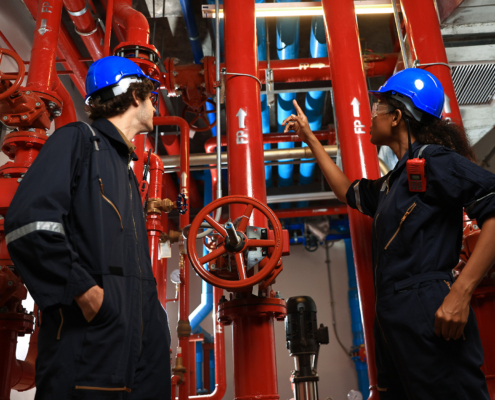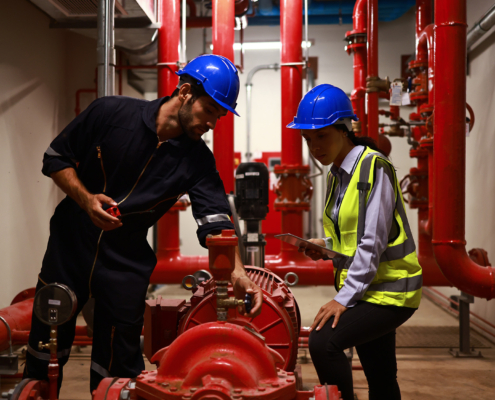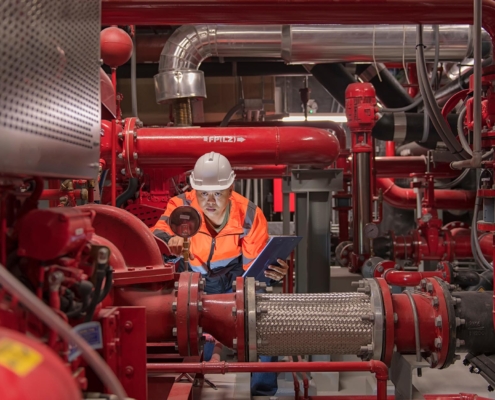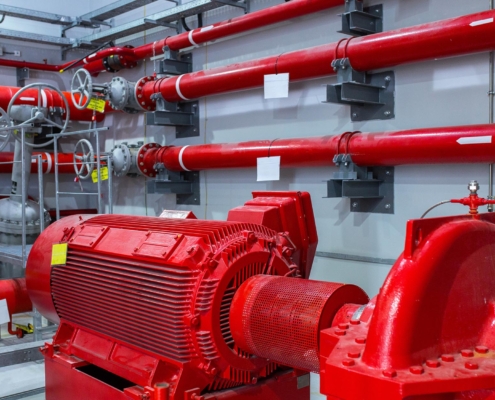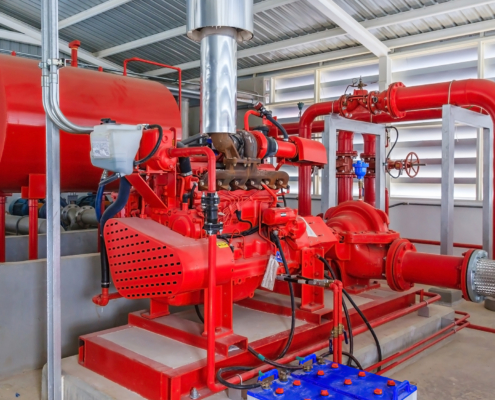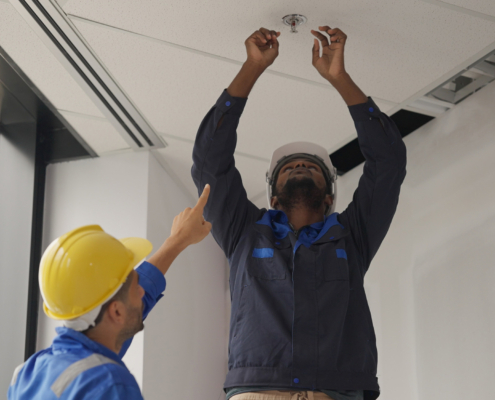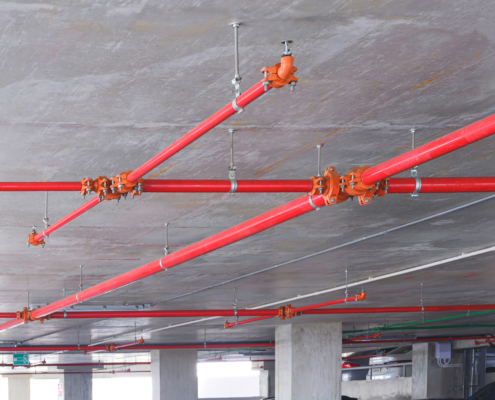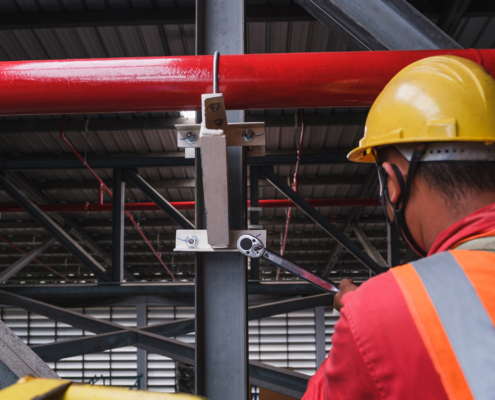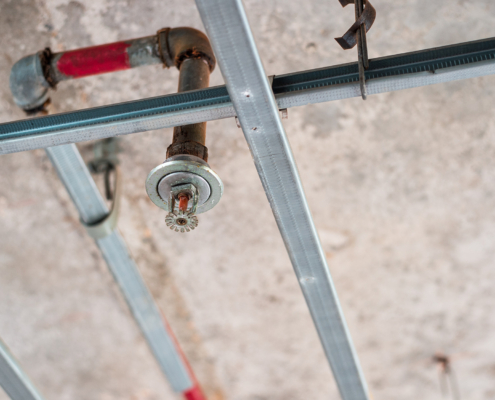Conducting a proper fire pump flow test is critical for ensuring that a fire pump system will perform effectively in the event of an emergency. The testing procedure is a meticulous process that involves a series of carefully planned steps and the use of specialized tools and equipment.
Below is a step-by-step explanation of how professionals perform these essential flow tests:
1. Preparation
Before beginning the flow test, professionals will gather all necessary tools and equipment, including pressure gauges, flow meters, hoses, and recording devices.
2. Safety Checks
Safety is paramount during testing. Inspectors conduct thorough checks of the fire pump room and the surrounding area to ensure it is safe to proceed with the flow test. All safety measures must be in place to protect personnel and property.
3. System Inspection
Prior to testing, a visual inspection of the fire pump, driver, controller, and associated system components is performed. This is to verify the system’s readiness and to identify any signs of damage or wear that could affect test outcomes.
4. Initiating the Flow Test
The flow test begins with the activation of the fire pump. The inspector will start the pump manually or rely on automatic features if applicable. Observing the pump’s start-up behavior is crucial for assessing the initiation performance.
5. Monitoring and Recording
With the fire pump in operation, data is meticulously recorded. The flow rate is measured using flow meters, and pressure readings are taken at various strategic points within the system. It is vital to ensure consistency and accuracy during this phase to get a reliable representation of the system’s performance under various flow conditions.
6. Simulating Fire Condition
To simulate the high-demand conditions of a real fire, inspectors may gradually increase the flow rate by opening discharge valves systematically. This tests the pump’s response to escalating demand and verifies its capacity to maintain adequate pressure.
7. Final Evaluation
After completing the range of tests, the pump is returned to its normal standby condition. The collected data from the flow test are then reviewed to evaluate the fire pump’s performance. Any abnormal findings are noted for further inspection or action.
Following this structured and comprehensive testing procedure not only ensures compliance with fire safety standards but also brings peace of mind that the fire pump system will function as expected during an emergency, protecting lives and property.

